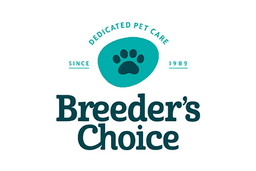Dogs and arthritis – our canine companions can get this painful condition as they age, just like humans.
It’s important to know the signs to look out for, and the best way to manage arthritis in your pet.
What is arthritis?
Arthritis is a degenerative disease of the joints. According to the RSPCA it comes in many forms, including osteoarthritis. it can affect one or more joints anywhere in the dog’s body.
Healthy joints are cushioned by a layer of cartilage. This allows connecting bones to move smoothly against each other, without pain.
In arthritis, the cartilage gradually deteriorates, reducing the dog’s mobility and causing pain.
Causes of arthritis in dogs
Over time, general wear and tear can make the joints unstable. This can lead to arthritis.
Other causal factors include injury, trauma, genetic makeup, infection and immune disease.
Obesity can also contribute to arthritis. The pressure of extra weight on the dog’s joint cartilage can speed up the progression of the disease.
What are the signs of arthritis in dogs?
It’s good to catch arthritis early, as a prompt diagnosis offers much better outcomes. So, as your dog ages, keep an eye out for symptoms.
The RSPCA says the following signs can indicate arthritis in dogs.
- A reduction in activity.
- Not so keen to walk or play.
- Stiff legs, especially in the mornings or after sleeping.
- Struggling to get up.
- Limping or lameness.
- Difficulty climbing stairs, or jumping up or down.
- Lagging behind on walks.
- Licking or chewing the joints.
- Giving a yelp of pain when touched in certain areas.
- Personality change or unusual aggressive responses.
Diagnosing arthritis in dogs
Don’t rely on guesswork when it comes to diagnosing arthritis in your pet. See a trusted veterinarian to give your dog a thorough examination.
This may require a general anaesthetic and x-rays to determine the extent of the problem. Other conditions can also mimic osteoarthritis, so they need to be ruled out.
Once your vet has diagnosed the condition, you can work together to create a treatment and management plan.
Dogs and arthritis: treatment
While canine arthritis cannot be cured, medications and treatments are available.
The best treatment will depend on several factors – your dog’s age, the severity of the condition, disease progression and the overall health of your animal.
- Disease modifying osteoarthritis drugs
These take the form of injections to stabilise joint membranes, speed cartilage repair and improve joint lubrication. One weekly injection is given over four weeks, with this course repeated every 6-12 months. This treatment generally has minimal side effects.
- Non-steroidal anti-inflammatory drugs
These specially formulated drugs reduce inflammation around the dog’s joints and relieve pain. Possible effect on liver and kidney function should be monitored.
- Nutraceuticals/prescription vet diets
Various manufacturers make specialist foods and dietary supplements. These contain glucosamine, chondroitin and/or fish oils, which may be helpful for longer-term management of arthritis.
- Surgery
Your vet can discuss the suitability of surgery, in specific cases.
- Physical therapy
A range of physical therapies can help reduce pain and improve your dog’s mobility. This includes stretching and strengthening exercises as well as trigger point massage.
Lifestyle change and management
A lot can be done at home to improve the health, comfort and mobility of your pet as well. A few lifestyle adjustments can make a big difference to your dog.
- Reduce and maintain your dog’s weight to ease pressure on joints and reduce inflammation.
- Take your dog for regular, controlled exercise, but avoid ball-chasing and vigorous bursts of running and leaping.
- Put your dog’s bed in a draught-free place with plenty of warm bedding.
- Provide a ramp as an alternative to stairs in the house or garden.
Weight management and healthy diet can also help reduce arthritis risk, keeping your dog in peak condition for as long as possible.





























